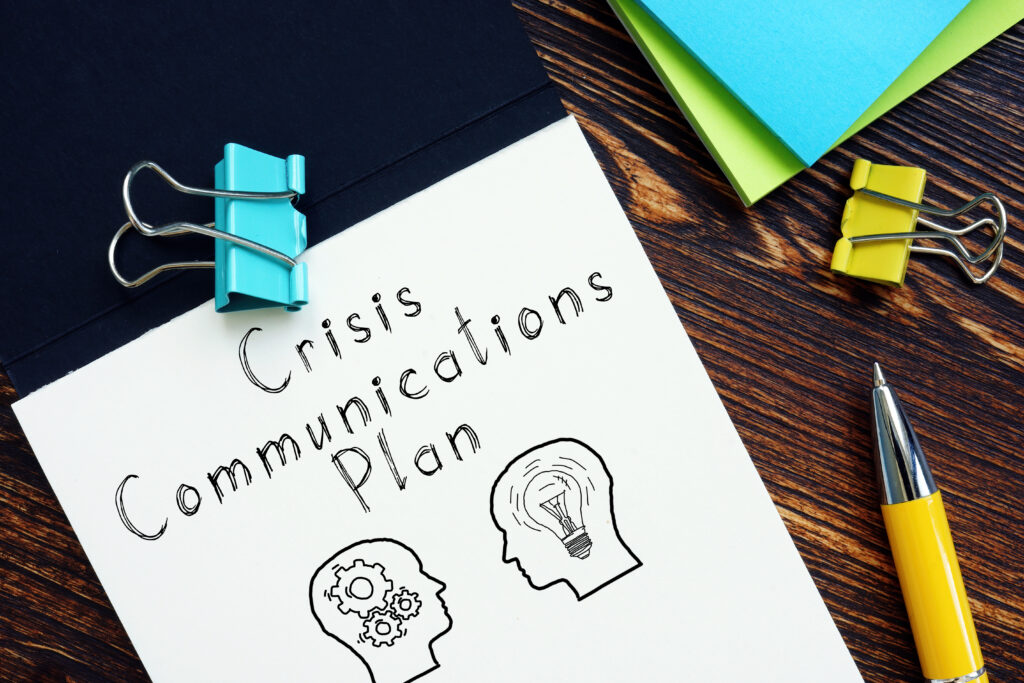Urgency In Crisis Communication
In the tumultuous realm of public relations, urgency is frequently the name of the game, particularly when crisis situations are at hand. Crisis communication encapsulates the coordinated attempts by organizations to manage and resolve crises by facilitating precise and prompt information flow. The strategic release of time-sensitive press statements plays a crucial role in this context, steering the public narrative and building trust.
This discourse delves into the significance of speed in crisis communications for pressing press releases, revealing its pivotal role in shaping public perception.
Crisis Communication: A Quick Overview
At its core, crisis communication is the embodiment of an organization’s immediate response to a crisis. The goal? To quell the uncertainty, minimize damage, and ensure transparent communication with stakeholders. When a crisis strikes, it’s not the calm after the storm that counts, but the quick and proactive action during the storm.
The art lies in crafting timely, factual, and concise messages that mitigate the situation rather than escalate it.
The High Stakes Game Of Timing In Press Releases
While many factors dictate the efficacy of crisis communication, timing remains a key determinant. Think of it as a chess game. Each move, or in this case, each statement, must be strategically timed to control the narrative, alleviate public concern, and uphold the organization’s reputation. A well-timed press release serves as a beacon, guiding stakeholders through the fog of crisis-induced uncertainty.
In this high-stakes game, the penalty for delayed or ill-timed moves is severe, with potential impacts ranging from damage to the organization’s reputation to escalation of the crisis at hand. Hence, the orchestration of timing in crisis communication is akin to a dance, demanding a delicate balance between speed and strategy to navigate successfully through the turbulence.
Implications Of Delayed Communication In Crises
Contrarily, delayed communication can lead to damaging consequences. Public perception is a fragile entity, easily swayed by speculation and rumor in the absence of official information. Unverified news, half-truths, and misinformation often fill the vacuum, escalating the crisis and undermining the organization’s credibility.
In the fast-paced, information-rich digital age, this vacuum fills up quicker than ever, accelerating the speed at which reputational damage can occur. As such, organizations need to grasp the imperative of rapid, precise communication as an integral part of their crisis management toolkit to prevent a crisis from morphing into a disaster.
The Catalyst Of Speed In Crisis Management
How, then, does speed catalyze effective crisis communication? A speedy press release serves two primary objectives. Firstly, it quells the spread of misinformation, offering factual narratives to stakeholders and media alike. Secondly, it demonstrates the organization’s commitment to transparency, fostering trust and credibility.
Elements Of Swift Crisis Communication
- Timely response: A timely response is a sign of control and preparedness. It assures stakeholders that the organization is adept at handling crises, safeguarding its reputation.
- Factual accuracy: In the rush to respond quickly, factual accuracy must not be compromised. Releasing accurate information rapidly helps dispel rumors and prevent misinformation.
- Consistency: Speed should not compromise the consistency of messaging. Consistent communication, combined with quick responses, boosts credibility and trust.
- Clarity: Rapid communication must be clear and concise. Ambiguity can exacerbate confusion, negating the benefits of a quick response.
Case Study: A Tale Of Speed And Strategy
Consider the infamous 2010 BP oil spill. The company’s delayed response and lack of transparency initially led to a catastrophic public backlash, impacting their reputation severely. Learning from this misstep, they adopted a rapid response strategy, using frequent press releases to keep the public informed.
This course correction, albeit late, showcased the importance of speed in crisis communications.
The Art Of Crafting Quick Press Releases
The speed of press releases does not imply hasty, ill-considered statements. Instead, it’s about having a well-prepared crisis management plan that can quickly spring into action. The plan should encompass predetermined roles, decision-making protocols, and communication channels, allowing for fast yet well-informed press releases.
This approach ensures that speed and quality are not mutually exclusive, but rather complementary facets of an effective crisis communication strategy.
Looking Ahead: The Continued Relevance Of Speed In Crisis Communication
As we navigate an increasingly digital world, the dynamics of crisis communication continue to evolve. Speed remains a non-negotiable aspect, with its importance augmented by the instantaneous nature of digital media. Organizations must thus be ready to quickly disseminate accurate information during a crisis, ensuring they remain the trusted source of truth for their stakeholders.
In a world where a single tweet can set the news agenda, organizations must act swiftly to set the record straight before misinformation takes hold. Equally crucial is the need to update stakeholders promptly as situations evolve, maintaining the flow of factual information, and asserting their role as the primary source of reliable updates.
Frequently Asked Questions
1. Why is speed important in crisis communication? Speed is crucial as it controls the narrative, minimizes the spread of misinformation, and reinforces the organization’s reputation for transparency and preparedness.
2. Can speedy communication lead to mistakes? While rapid response may risk inaccuracies, this risk can be mitigated through a robust crisis management plan that emphasizes factual correctness and clarity.
3. What elements contribute to effective speedy crisis communication? Timeliness, factual accuracy, consistency, and clarity are all key to effective crisis communication.
4. How can an organization ensure a speedy yet accurate response in a crisis? A robust crisis management plan, complete with predetermined roles, decision-making protocols, and communication channels, can help ensure speedy yet accurate responses.
5. How has the digital age influenced the importance of speed in crisis communication? The digital age, with its instantaneous spread of information, has magnified the importance of speed in crisis communication, requiring organizations to react faster to maintain control over the narrative.
Key Takeaways: The Imperative Of Speed In Crisis Communication
While crises are often unpredictable, the principles of effective communication remain consistent. Speed is, without a doubt, integral to these principles, making the difference between an exacerbated crisis and a controlled scenario. As organizations navigate potential crises, the urgency of a timely response must be etched in their communication strategies, for it can make or break public trust.
Remember, when a crisis strikes, the clock doesn’t just tick—it races.



